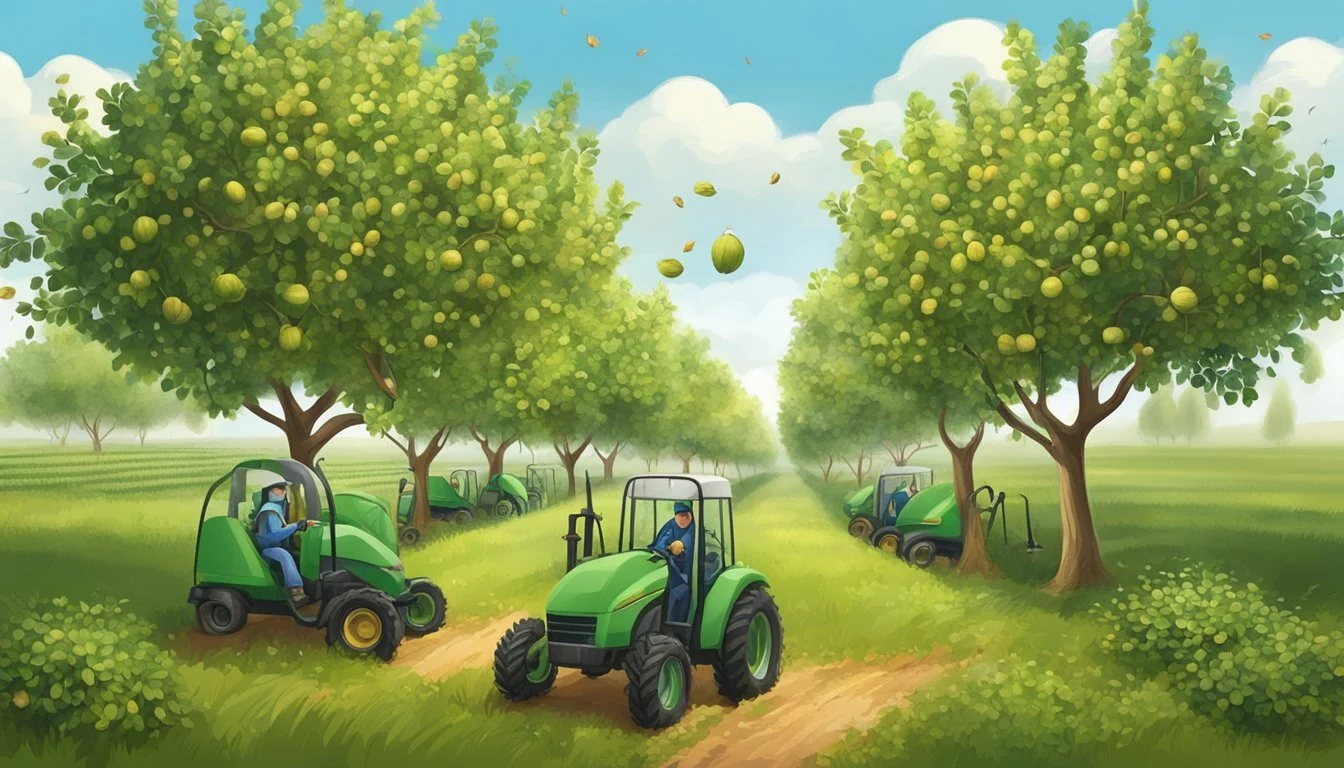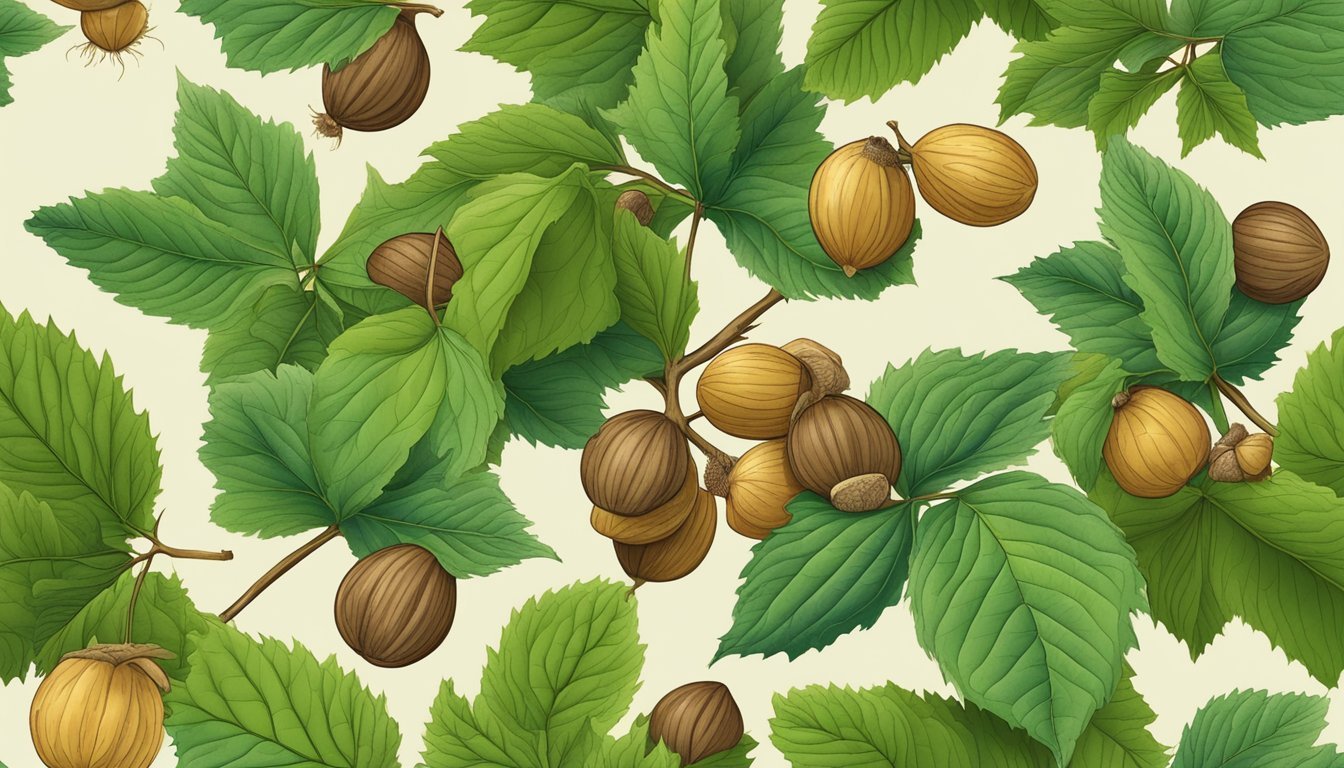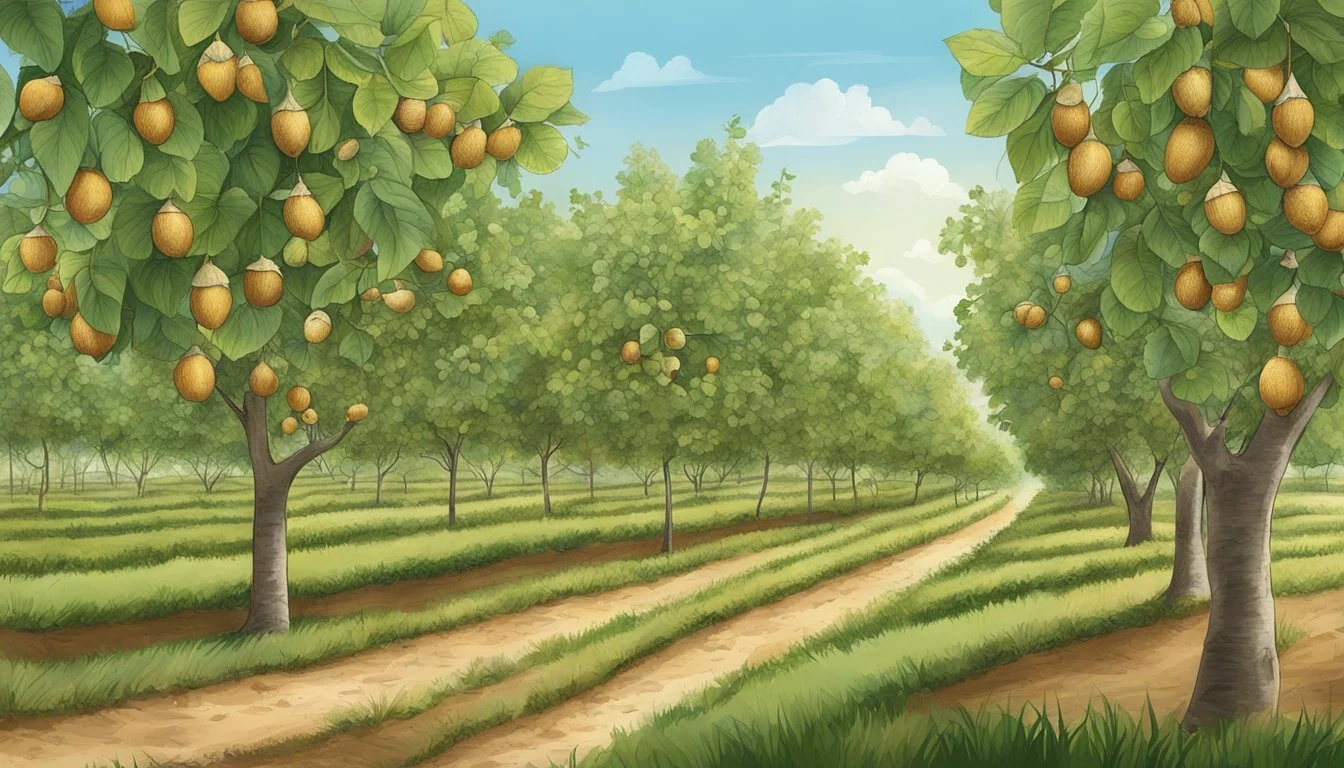Pest Control for Hazelnut Orchards
Effective Strategies for Healthy Crops
Pest management in hazelnut orchards is a critical aspect of agricultural practice that ensures the health and productivity of the trees. Hazelnut growers are faced with various pests including insects, mites, and diseases that can significantly impact crop yields. Effective pest control strategies involve a combination of monitoring, preventive measures, and timely applications of control products. Knowledge of the orchard's specific conditions and thoughtful integration of pest management techniques are essential for maintaining a healthy orchard.
In the Willamette Valley, which is renowned for its hazelnut production, comprehensive guidelines have been developed to help growers make informed decisions about pest control. These guidelines include detailed information on the lifecycle of common pests, proper use of chemicals, and application rates that respect the delicate balance of the orchard ecosystem. As each orchard is unique, growers must tailor their pest management programs to suit individual orchard characteristics, taking into account factors such as tree age, density, and the specific pests present.
Utilizing advanced research and local orchard experience, pest management in hazelnut orchards can be conducted effectively with minimal impact on the environment. This involves adhering to best practices for applying pesticides and fungicides, including considerations for timing, dosages, and the selection of materials that are most effective against targeted pests. Growers who prioritize integrated pest management principles can safeguard their hazelnuts against damage while also promoting long-term sustainability of their orchards.
Understanding Hazelnut Orchards
Hazelnut orchards are specialized agricultural areas dedicated to the cultivation of hazelnuts, which require precise conditions for optimal growth and health. These orchards benefit from informed site selection and an understanding of the biology of the hazelnut tree itself.
Biology of Hazelnuts
Hazelnut trees (Corylus avellana) bear the prized fruit known commonly as hazelnuts. These trees produce nuts (What wine goes well with nuts?) that are not only rich in oils and nutrients but also hold significant economic value. Hazelnuts consist of a hard shell enclosing the edible kernel, which is high in protein, dietary fiber, vitamins, and minerals.
Essential Nutrients:
Proteins
Dietary fiber
Vitamins (E, B-group vitamins)
Minerals (calcium, magnesium, iron)
Hazelnuts are primarily wind-pollinated, with some cultivars being more susceptible to diseases such as Eastern Filbert Blight. Researchers at the Oregon State University Extension have studied these cultivars, identifying varieties that are more resistant to pests and diseases.
Orchard Site Selection and Climate
The success of a hazelnut orchard begins with proper site selection. Orchards require well-drained soils and ample sunlight to ensure the health and productivity of the hazelnut trees. Proper site selection can also reduce vulnerability to pests and climactic stresses.
Ideal Climatic Conditions:
Mild winters
Wet springs
Long, warm summers
The Willamette Valley in Oregon exemplifies an ideal location for hazelnut orchards due to its climate and soil quality, which enable the trees to thrive and produce high-quality nuts. Special attention is given to the selection of cultivars best suited to the local conditions, as they can greatly influence the orchard's resilience and yield.
Hazelnut Pest Identification
Identifying pests in hazelnut orchards is a crucial step in integrated pest management. Accurate identification helps in implementing timely and effective control measures, safeguarding the health of the orchards and the viability of the hazelnut industry.
Common Pests of Hazelnut Orchards
Hazelnut orchards host a variety of insect pests, which can affect crop yield and quality. Among the most significant is the filbertworm, which targets the nuts themselves, boring into the shells and feeding on the kernels. Big bud mites cause the buds to swell, leading to poor plant development and reduced yield. The filbert aphid (Myzocallis coryli) and hazelnut aphid draw sap from the plant, weakening it and sometimes transmitting diseases. Other pests like ambrosia beetles and hazelnut weevil compromise the integrity of the trees by burrowing into trunks and branches.
Filbertworm: The larva that damages the kernel.
Big Bud Mite: Causes swollen buds, hindering growth.
Filbert Aphid (Myzocallis coryli): Sap-sucking insect, can spread diseases.
Hazelnut Weevil: Larvae feed within the nuts.
Ambrosia Beetles: Wood-boring beetles that can cause structural damage to trees.
Hazelnut Pest Life Cycles
Understanding the life cycle of hazelnut pests is crucial for effective pest control. For instance, the life cycle of filbertworms begins when they lay eggs on developing nuts, and the emerging larvae tunnel into the nuts to feed. Similarly, big bud mites overwinter in bud scales and become active in spring. Ambrosia beetles have a distinctive life cycle where they penetrate the wood of hazelnut trees, creating tunnels to lay eggs, and the larvae eventually emerge as new adults.
Filbertworm: Eggs laid on nuts → Larvae emerge and feed → Pupation inside the nuts.
Big Bud Mite: Overwinters in bud scales → Active in spring → Infests new buds.
Ambrosia Beetle: Penetrates bark → Lays eggs in tunnels → Larvae develop within the tree.
Monitoring for Early Detection
Early detection of hazelnut pests through consistent monitoring is critical to protect the orchard from significant damage. Growers should inspect for signs of filbertworm damage such as frass or entry holes in the nuts. Regular checking of buds can reveal the presence of big bud mites, and sighting of filbert aphids could indicate potential for disease spread. Tools like pheromone traps can be effective in monitoring for pests like the filbertworm, and routine visual inspections can identify early infestation of ambrosia beetles.
Visual Inspection: Look for signs of feeding, frass, and distorted plant growth.
Pheromone Traps: Used for attracting and trapping adult filbertworms.
Disease Monitoring: Watch for symptoms of disease potentially spread by aphids.
Pest Management Systems
Effective pest management in hazelnut orchards requires a multifaceted approach that includes several strategies to protect the trees and their yield. These strategies are designed to work in harmony with the orchard's environment, covering early detection, the use of chemicals, the application of cultural practices, and employing natural predators.
Integrated Pest Management (IPM)
Integrated Pest Management (IPM) is a sustainable approach that combines various management strategies and practices to minimize pest damage. IPM involves regular pest monitoring to ensure early detection of threats, reducing the chance of significant infestations and the spread of diseases like bacterial blight or sooty mold. It emphasizes ecological balance and encourages the use of natural enemies to control pest populations.
Chemical Control Strategies
When chemical control is necessary, the focus is on the judicious use of insecticides and other chemicals. Proper application and timing are crucial to manage resistance build-up in pests. Adherence to recommended rates and methods lessens the potential negative impact on the environment and non-target organisms. For emergency information on pesticide spills, orchardists can contact the Oregon Emergency Response System.
Cultural and Biological Controls
Cultural control involves modifying the orchard environment to be less conducive to pests through practices like pruning and irrigation management. These controls, when combined with biological ones such as introducing or conserving natural predators and parasites, form an essential component of a comprehensive pest management system. They help maintain the ecological balance within the orchard, providing long-term sustainability.
Advanced Pest Monitoring Techniques
In the realm of hazelnut orchard management, advanced pest monitoring techniques are pivotal for maintaining crop health and yield. Innovations such as pheromone-based systems, precision agriculture tools, and data-driven solutions are at the forefront of combating pest infestations.
Utilizing Pheromones and Traps
For hazelnut growers, pheromones and traps offer a sophisticated means of controlling pests like Melissopus latiferreanus and Cydia latiferreana. By emulating the chemicals insects use to communicate, pheromone traps effectively lure and capture pests, preventing nut damage. The implementation of such traps allows farmers to establish action thresholds – the pest population level at which control measures should be taken – to enhance the efficacy of pest management while minimizing unnecessary pesticide use. Spinosad, a common pesticide, is more effective when applied once the movement of pests is detected by these traps.
Precision Agriculture in Pest Management
Precision agriculture is revolutionizing pest management by enabling targeted interventions. This approach conserves resources and maximizes impact by pinpointing the exact locations of pest infestation within orchards. Through the use of various sensors and mapping technologies, precision agriculture provides actionable insights, allowing for tailored applications of control methods. Such precision not only increases the efficacy of pest control efforts but also enhances the overall sustainability of orchard management.
Data-Driven Monitoring Systems
Harnessing the power of data-driven monitoring systems propels pest management into a new era. These systems integrate real-time computation, using platforms such as Nvidia Jetson Xavier, to analyze vast amounts of data. Techniques like You Only Look Once (YOLO), an advanced framework for object detection, are employed for early detection of pests. By combining images from the field with data augmentation methods, these systems provide timely and precise pest infestation evaluations, enabling growers to respond swiftly to emerging threats and maintain optimal health of their hazelnut crops.
Environmental and Health Considerations
Effective pest management in hazelnut orchards includes understanding the potential consequences that control measures can have on both the environment and human health. It is critical to balance pest control with ecological preservation and health safety concerns.
Impacts of Chemicals on the Environment and Health
Chemical pesticides have been a conventional tool in hazelnut pest management. However, these substances can significantly impact both the immediate orchard environment and the broader ecosystem. Residual chemicals can lead to soil degradation and water pollution, affecting numerous organisms that are integral to orchard health, such as natural enemies of pests. For humans, exposure to certain pesticides might pose health risks ranging from acute effects like skin irritation to more serious chronic impacts, including respiratory disorders and adverse neurological effects.
Promoting Orchard Ecology
Promoting a healthy orchard ecology is paramount for sustainable hazelnut cultivation. Implementing Integrated Pest Management (IPM) strategies emphasizes the role of beneficial organisms and natural enemies of pests, like predatory insects. This method supports the natural ecosystem's ability to regulate pest populations and minimize the reliance on chemical interventions. By fostering biodiversity and ecological balance, growers not only protect the environment but also create a safer health landscape for workers and local communities.
Consideration of these practices is essential for the long-term viability of hazelnut orchard management and the preservation of the surrounding ecology.
Frequently Asked Questions
These key points address common concerns and best practices in maintaining a healthy hazelnut orchard through proper pest management.
What are the common pest management strategies for hazelnuts?
Proper pest management for hazelnuts typically involves a combination of monitoring, use of pesticides, and employing agricultural practices that reduce pest risks. Chemical controls, biological controls, and cultural strategies such as sanitation fall within these strategies.
Which insecticides are recommended for pests in hazelnut orchards?
The use of specific insecticides in hazelnut orchards is based on targeted pests and orchard conditions. Recommendations must comply with updated research and orchard experience to ensure the safety and effectiveness of applications. For instance, information about chemical formulations and application rates can be obtained from resources such as the 2020 Pest Management Guide for Hazelnuts.
How can hazelnut growers implement integrated pest management effectively?
Effective implementation of integrated pest management (IPM) in hazelnut orchards involves continuous orchard assessment, choosing the right control methods, and timing actions to disrupt pest life cycles. Hazelnut growers should incorporate preventive measures and use chemical controls as a last resort.
What specific pests pose the greatest threat to hazelnut trees?
Pests such as filbertworm, aphids, and mites are among those that pose significant threats to hazelnut trees. Management strategies must be tailored to combat the most prevalent and damaging pests as identified through routine monitoring and historical orchard data.
How often should hazelnut orchards be monitored for pest activity?
Hazelnut orchards require regular monitoring to effectively manage pest populations. Monitoring should occur at intervals that align with the critical stages of pest development, which can range from weekly to bi-weekly during active growth periods.
What cultural practices can aid in controlling pests in hazelnut production?
Cultural practices such as sanitation (removing and destroying infected wood), proper pruning, and ground cover management can play a crucial role in pest control in hazelnut orchards. These actions help minimize pest habitats and disrupt their life cycles.






